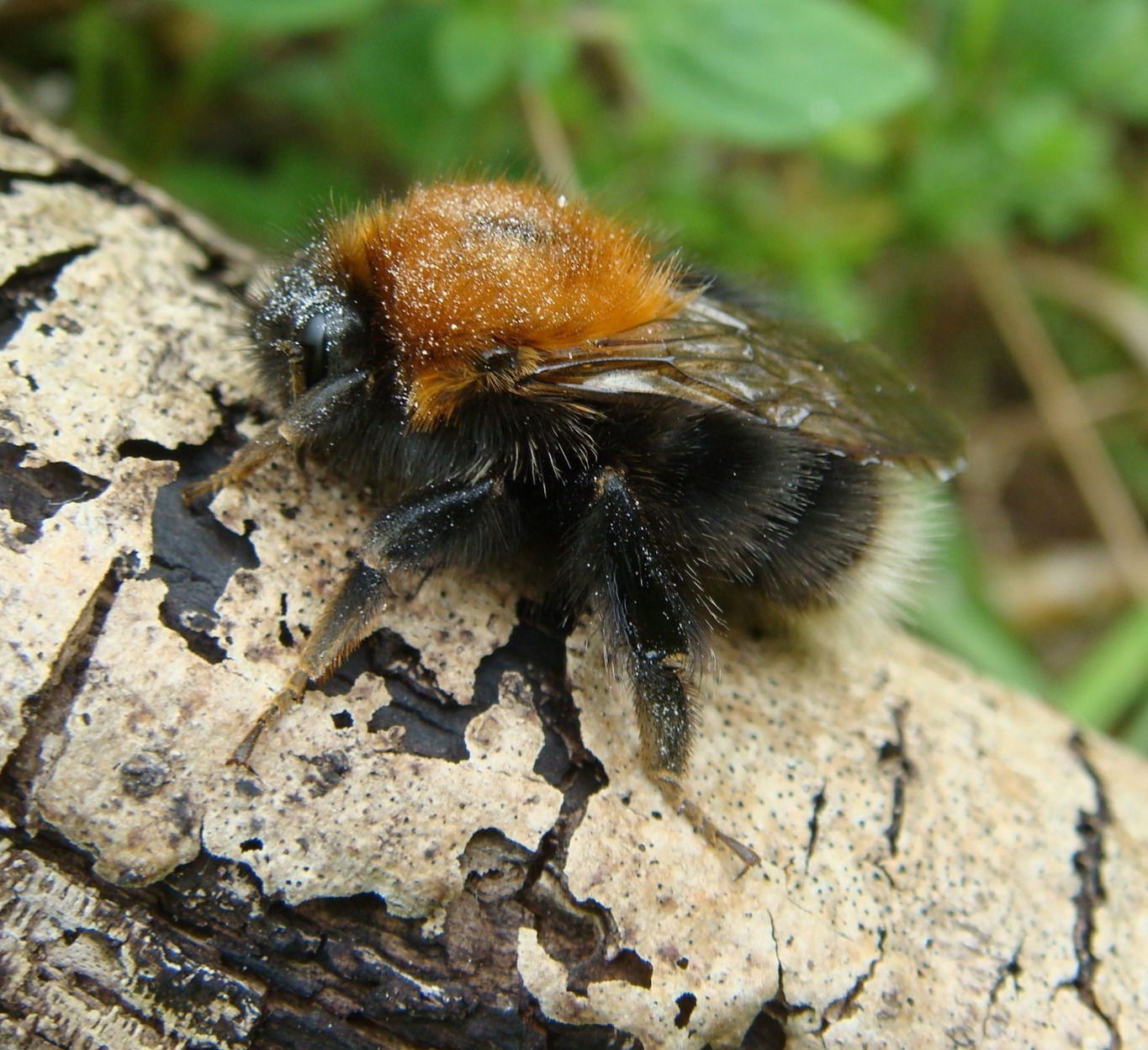Fauna & Flora Recording

Tree Bumblebee (Bombus hypnorum) queen
At different times of the year a wide variety of interesting wildlife can be spotted on the Spetchells. Members of SCIG monitor and record the flora and fauna, from the special orchids to rare butterflies and small solitary bees. Invited specialists have helped with plant identification, and moth trapping and a trail camera have increased our knowledge of the species present.
Recording of bumblebees is now carried out monthly as part of the Bumblebee Conservation Trust's BeeWalk project, with solitary bees being recorded in parallel.
SCIG compiles a regularly updated list of all flora and fauna recorded on the Spetchells; members can apply via the Secretary to have access to this.
For photographs of some of our amazing species please go to the Gallery.
Why Record:
Wildlife recording can be fascinating and rewarding, and contributes to science and conservation. Anyone visiting the Spetchells is encouraged to record sightings of fauna and flora. Good quality biological records are essential to inform everything from planning decisions to political policy to scientific research and practical wildlife conservation.
What is a Record:
A record gives details of one species at one location at one time; the What, Where and When are all equally important, plus Who made the record.
How to Record:
iRecord https://irecord.org.uk/ is a free national website/database for recording and managing wildlife observations with associated photos. Records can then be checked and verified by experts from National Recording Schemes (note: not all species are covered by a Recording Scheme). Records entered are available for anyone to see, and included in distribution maps. All data is uploaded to the NBN Atlas.
The iRecord App now gives identification suggestions through image recognition (though beware, this is not fool-proof; always check key features to confirm the proposed id).
iNaturalist https://uk.inaturalist.org/ a free community for naturalists who want to record their observations for their own use. Help with identification is by crowdsourcing (so beware as this is not fool-proof and is not necessarily by experts). Records are filtered through to iRecord (see above) where experts may verify your records. For records to be of scientific quality please ensure you are fully logged in using your actual name (not a pseudonym, as many National Recording Schemes will not verify or accept these records - because of GDPR iRecord verifiers cannot contact recorders using iNaturalist to ask clarification questions, unlike if recording via iRecord).
Natural History Society of Northumbria (NHSN) https://www.nhsn.org.uk/ are running citizen science projects focusing on Bees https://www.nhsn.org.uk/north-east-bee-hunt/ and Ladybirds https://www.nhsn.org.uk/the-north-east-ladybird-spot/ with recording via their portal to iRecord. The website includes huge amounts of interesting identification resources. They also run very helpful Facebook groups that offer identification help for species in the NE.

Early Marsh Orchid (Dactylorhiza incarnata)?
Apps for Identification:
Always check key features to confirm that the proposed identification is correct:
Obsidentify - for all wildlife (if it does not know it still tries to guess to species level, so can be misleading)
Merlin - for birds and their calls
PlantNet (Pl@ntNet) - for plant identification
SEEK - the AI identification app developed for iNaturalist.
